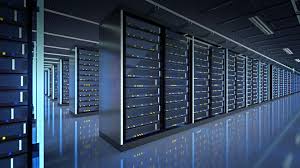When discussing legacy enterprise systems, AS400 (also known as AS/400 or iSeries) and mainframes often come up in the same conversation. But while they both serve large-scale enterprise computing needs, they’re fundamentally different in architecture, purpose, and use cases.
In this guide, we’ll explain the difference between AS400 and mainframe, dispel common misconceptions, and help you understand which technology suits which business context today.
What is AS400?
IBM first introduced the AS400, or Application System/400, in 1988. It eventually developed into the iSeries and is currently referred to as IBM i on Power Systems. Many experts continue to refer to it as AS400 in spite of the nomenclature modifications.
This mid-range computer system is intended for small and medium-sized enterprises, particularly those who require low-maintenance, high-performance transactional systems.
Key Features of AS400:
- Uses IBM i operating system
- Known for stability, security, and reliability
- Supports RPG, COBOL, Java, and SQL
- Integrated DB2 database
- Common in manufacturing, banking, and logistics
Keyword tip: When people search for “what is AS400” or “AS400 mainframe,” they often confuse the two systems, but they serve very different roles.
What is a Mainframe?
A mainframe is a high-capacity computing system designed for processing massive volumes of data and transactions simultaneously. IBM’s zSeries is the most well-known example.
Mainframes are common in large enterprises, such as banks, governments, and insurance companies, where uptime, security, and data integrity are critical.
Key Features of Mainframes:
- Designed for massive throughput and high-speed processing
- Runs z/OS, z/VSE, or Linux on zSystems
- Supports batch processing and online transaction processing (OLTP)
- Can handle thousands of concurrent users
- Often used in mission-critical environments
AS400 vs. Mainframe: Key Differences
| Feature | AS400 (iSeries) | Mainframe (zSeries) |
| Type | Midrange system | Enterprise-grade mainframe |
| Operating System | IBM i (formerly OS/400) | z/OS, z/VSE, Linux |
| Architecture | Power-based | System z architecture |
| Target Market | SMBs and mid-market enterprises | Large-scale global enterprises |
| Primary Use Cases | ERP, inventory, finance apps | Banking, insurance, governments |
| Cost | More affordable | Expensive and complex |
| Programming Languages | RPG, COBOL, Java | COBOL, PL/I, Assembler, Java |
| Security & Uptime | High | Ultra-high (up to 99.999% uptime) |
| Database | DB2 for i | DB2 for z/OS |
Common Misconceptions
AS400 is NOT a mainframe
Although both are IBM products, AS400 is a midrange system, whereas mainframes are designed for large-scale processing. The confusion often arises because both systems support COBOL and serve back-end business functions.
AS400 is still in use today
Many believe AS400 is outdated, but IBM i on Power Systems is actively supported and widely used in industries that value reliability and legacy application continuity.
Mainframes aren’t obsolete
Despite their age, mainframes remain essential in industries like banking, where they process billions of transactions per day securely.
Which One Should You Use?
- Choose AS400 (iSeries) if you are a mid-sized business looking for a reliable, secure system to handle ERP, warehousing, or accounting applications.
- Choose a mainframe if you’re a large enterprise managing critical workloads, like real-time banking transactions, airline reservations, or national security data.
Real-World Example
A regional manufacturing company might use AS400 to manage inventory, production schedules, and supply chain logistics using RPG-based ERP software. Meanwhile, a global bank may rely on a mainframe to process millions of credit card transactions in real-time every second.
Conclusion
While both AS400 and mainframes are IBM technologies built for enterprise-level workloads, their differences are substantial. Understanding their distinct roles helps businesses choose the right platform for their operational and budgetary needs.If you’re still wondering, “What is AS400 and how does it compare to a mainframe?” — the answer is that while both serve vital backend functions, they are not interchangeable. Knowing this distinction is essential when modernizing legacy systems or planning future IT investments.
FAQ’s
No, AS400 is not a mainframe. It is a midrange system developed by IBM for small to mid-sized businesses, while mainframes are large-scale systems used by massive enterprises for high-volume processing.
AS400 (now IBM i) is used for ERP systems, inventory management, finance, payroll, and database-driven applications, primarily in logistics, healthcare, and manufacturing sectors.
Yes, AS400 systems are still widely used under the IBM i brand. Many companies continue to rely on them due to their reliability, security, and long lifespan of legacy applications.
The main difference lies in scale and architecture. AS400 is for midrange computing on Power Systems, while IBM mainframes are designed for enterprise-scale, mission-critical computing on System z.
No. They run on different operating systems and architectures. AS400 uses IBM i, while mainframes run z/OS or other mainframe OS versions.





